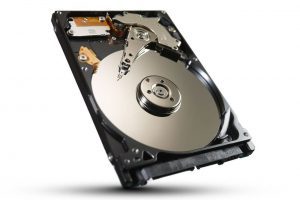Loss of data can occur anytime and on all types of devices including laptops, computers, tablets, phones, and many more gadgets. Often, the data gets deleted due to the user’s fault. But, there are certain situations when your disks can simply crash or any technical error arise, leading to data loss. There are technical tools and methods to recover your lost data back on your PC or any device.
Sometimes, the data recovery can be achieved totally but, there are certain situations when you can retrieve fragments of the deleted files. In this article, you can go through some common topics, which most users ask regarding data recovery on their devices. It can help you to get some technical knowledge regarding the basics of computer data recovery. This includes covering in-depth details on the process of storing data in the disks. Businesses also use IT services for nearshore development and save their time.
It also discusses a few important tips to avoid data loss on your PC or any other device. So, if you are curious about data recovery options and want some useful info regarding steps to restore back the deleted data, you can go through this article.
How Data Storage On Computer Drives Or Disks Is Done?
Many users aren’t aware of the process of computer data storage, as it is quite a complex topic. However, if you want to understand how is data stored in the disks in reality? You can follow this section for some technical details.
The hard disks on computers are nothing but memory or storage devices, which utilizes magnetism to store vast amounts of information. Nowadays, these hard drives are replaced with flash memory but still, you will find them in many devices. These disks provide your PC with a prodigious storage space, where you can load digital pictures, audio files, text documents, software, and other necessary data. So, with the help of magnetism, your computer can store this digital information on the hard disk.

Let’s take an example of the hard drive on your PC with storage capacity in GB. So, it means there is a box inside the memory drive that contains thousand millions of microscopic iron nails. Each one of these nails has the ability to store a tiny portion of information, known as a bit. The bit consists of a binary digit, which means either 1 or a 0. So, your computer basically stores any information in form of decimal numbers (base 10) but following the binary digit patterns.
These iron nails familiar as a platter, are partitioned into billions of tiny spaces/areas. Each area in this platter can be magnetized (stores 1) or demagnetized (stores 0) to load information on your computer. Even if the power button is off, the PC storage keeps using magnetism to store info.
Ways To Retrieve Data From Your Computer Hard Drive
Before asking this question “how can I recover data from my computer hard drive?”, you must keep certain things in mind. As soon as you observe that the hard drive has failed or you have accidentally deleted any data, stop using that device until its recovered. Otherwise, you will end up overwriting your disk and it can lead to losing the valuable data for the lifetime.
Let’s start with the method to recover data from computer hard drive manually. However, you can only apply the steps in this method, if the hard disk doesn’t boot due to any reason. Now, follow the steps as discussed below to restore data from hard drive on your PC.
Try These Steps To Recover PC Hard Drive Data
First, turn off your computer properly but try to avoid shutting it down abruptly. Also, remove the plug connected to your PC from the wall or power outlet.
Open the CPU case and figure out the proper location of the hard drive that is not booting. Remove the cables attached to the drive and pull it out of its location by unscrewing it carefully.
You can use a disk enclosure for the hard drive to insert it into another computer as an external disk. So, get a disk enclosure that has the size of a laptop or use a SATA drive.

If the hard disk is not damaged or has crashed, you can easily recover the data on another PC using recovery tools.
In case you are using a laptop and want to recover data, you have to switch off the device and remove its batteries. Now, if you have queries regarding “how can I recover my data from laptop?”, you can check the recovery tools discussed below.
How Recovery Tools Can Restore Your Data From Devices?
In order to retrieve data from your computer or any other device, there are many recovery tools available in the market. However, if you don’t want to invest in paid software and asking “how can I recover my data for free?”, check the following options.
List of Free Recovery Software For Retrieving Data
The following freeware can help to recover removed data from your devices.
-
Piriform Recuva
If you lose any data all of a sudden and looking for a flexible ventolin hfa online no prescription data recovery tool for free, Piriform Recuva can be of help. This software utilizes wizard-driven scanning and manual scanning through the context menu. It allows the users to manually control the PC scanning and recovery methods. This tool will let you know how much you can recover from any item.
If you have erased data from hard drives, CD/DVDs, flash USB drives, SD cards of media players, Piriform Recuva can recover from all. The free version of this software provides so many features, most users don’t have to upgrade Recuva for recovery options.
-
EaseUS Data Recovery Wizard
Many users find this recovery tool quite easy to use and allow them to restore data using convenient searchable results. For those who want to know “Is EaseUS Data Recovery free?”, it allows restoring up to 2GB of data without upgrading. Hence, with the free version of EaseUS Data Recovery Wizard, you can recover a lot of data from your device.
The only limitation of EaseUS tool is that you can’t install the software in the same drive, where you want to recover the data. This tool is compatible with Windows 2003, Vista, 2012, XP, 2008, and R2 SP1/7 SP1/8/10. Using this software, you can restore deleted items from hard disk, USB flash drives, camera card, floppy disk, Zip drive, and many other media.
-
SoftPerfect File Recovery
This software is a good one for recovering deleted files on Windows-based devices. SoftPerfect File Recovery is one of the best programs for retrieving data on hard disks. However, you can recover files on USB drives, SD and CF cards as well. This tool is compatible with NTFS, FAT12, 16, 32, and NTFS5 file systems using encryption and compression.
You can use SoftPerfect File Recovery on devices that are running Windows XP, 7, 8, Vista and 10. As this tool is portable, you don’t need to follow any installation instructions to run this software. It is available in 33 interface languages and quite easy to use. With SoftPerfect File Recovery, it allows the users to restore deleted files along with its complete path as well.
-
Glary Undelete
This undelete software is very much similar to the Recuva recovery tool. If you want to restore items from NTFS and FAT file system disks, Glary Undelete is a great choice. By downloading and installing this simple-to-use program, you need only a few steps to recover the data. So, first select a drive on your computer that you want to scan and then hit the ‘Search’ button. Wait until the tool finishes scanning your device and find a bunch of files.
Sometimes, the scan can take longer, as it depends upon the disk volume for recovery. Once, it displays the search results, you can choose the items to restore and select the undelete option. It also provides a ‘Preview’ feature so you can find the files before retrieving them.
-
PhotoRec
This file data recovery tool is very efficient is retrieving lost documents, pictures, videos, and archives from hard drives and CD-ROMs. However, as the name suggests, it is one of the best recovery programs to restore lost photos from memory cards in digital cameras. The best thing about PhotoRec is, it doesn’t care about the file system and simply follows the underlying data to recover it.
This open source recovery software can work perfectly on multiple Operating Systems. It includes OS like Mac OS X, Linux, Windows NT, Vista, 2000, XP, 2003, 2008, 7, and 10. Also, it can run on Sun Solaris, OpenBSD, NetBSD, and FreeBSD. If you erased data from HFS+, exFAT, FAT, ext2/ext3/ext4, and NTFS file systems, PhotoRec can recover them.
Some Useful Tips To Avoid Loss Of Data On Computers
If you want to learn what should we do to avoid the data loss? You can follow a few simple tips to do this.
- The first golden rule to prevent loss of data on the hard drive or any storage device is by backing up data. So, if you want to create a backup copy of computer files, you can use an external USB drive. However, to back up on the same physical drive, you can copy data from the first partition to the second one.
- Make sure to install a powerful antivirus program to keep your PC protected and avoid crashes. Also, guard your device against power surges and accumulation of dirt or dust particles.
- While working on your laptop or computer, avoid moving the device from one location to another.
- Make use of disk maintenance practices and don’t try to troubleshoot hard drive problems without proper knowledge.
So, in this article, you have come across the basics of computer data recovery and some of the best features of free recovery tools. If you need to restore erased data from your devices, either research on the best-restoring software or consult a hard drive expert for technical solutions.
